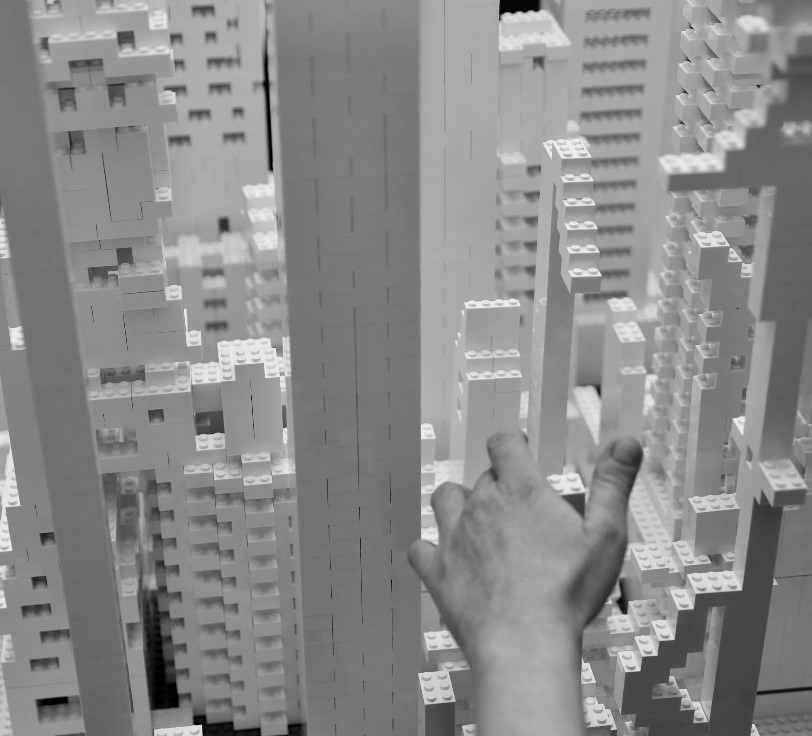A new paper on “Efficient Team Structures in an Open-Ended Cooperative Creativity Experiment”, has been published in Proceedings of the National Academy of Science. The article is the outcome of a collaboration between the Sony Computer Science Lab of Paris, Sapienza University of Rome, and the Complexity Science Hub in Vienna. The international team has devised a new experimental setting aimed at investigating the factors that make working teams effective in open-ended creative tasks.
Creativity is one of the most distinctive features of human beings. Its importance throughout all human history is indisputable, being it the engine behind social, artistic, and technological innovations. Over the centuries, scholars have been investigating the nature of creativity, trying to grasp both its characteristics and the mechanisms behind its emergence, as well as to understand how it can be artificially enhanced. In modern days, the pervasiveness of new means of communication has made the creative process more collective than ever. From music to cinema, from computer programs to publishing, all these fields rely on the interplay between many actors contributing with small chunks to a final product.
The article contributes to the understanding of the conditions at the basis of efficient collaboration during creative tasks. The team of researchers designed an open-ended experiment that took place in three days during the “Kreyon Days” exhibition at the PalaExpo in Rome. Participants to this event could freely join and leave the experiment at will, without constraints on the time spent taking part or how they had to contribute. During the experiment, each participant could contribute to the collective development of three artworks made LEGO®, either by building, destroying, or modifying some of their parts. Whenever joining the experiment, participants were provided with an RFID sensor that recorded their interaction with the other participants, and the time they spent developing each of the artworks. This monitoring allowed the researchers for a precise mapping of the evolving social network of participants and to isolate the work-groups which were developing an artwork at an accurate time. In parallel, the temporal evolution of the volume of the artworks was monitored to identify specific moments when the development was particularly efficient.
By comparing the two kinds of information, the researchers identified some of the characteristics of the working groups responsible for the efficiency of the building activity. In particular, the “Granovetter Conjecture” about the presence of Weak-Ties has been put to the test. Weak-ties are interactions between two individuals that have not interacted much previously. Individuals are linked with a new flux of information and, hence, they bring new ideas in the social network. However, too many weak-ties might prevent efficient communication to take place, hindering the flux of information. Strong-Ties, on the other hand, are interactions between individuals that have already interacted a lot. They provide a small flux of new information but ensure efficiency in communication. It has been observed that the right balance between Weak and Strong Ties in work-groups was correlated with a significant efficacy of the collective activity. Hence, the right balance between the known (Strong- Ties) and the unknown (Weak-Ties) might be among the elements enhancing collective creativity.
The experiment also allowed to identify other features leading to efficient and creative working teams. For instance, the presence of influencers, i.e., individuals capable of spreading information in large parts of the social network; the commitment of individuals on a single artwork; the size of the working teams.
The generality of the proposed approach makes it applicable very widely for other open-ended creative and collective tasks. Moreover, it can be easily reproduced in online and digital settings like social-coding platforms or online text editors.
References:
Monechi, Bernardo, Pullano, Giulia and Loreto, Vittorio. “Efficient Team Structures in an Open-Ended Cooperative Creativity Experiment.” Proceedings of the National Academy of Sciences 116.42 (2019).
DOI: 10.1073/pnas.1909827116
Download the pre-print version here
LEGO® is a trademark of the LEGO Group, which does not sponsor, authorise or endorse this site.



